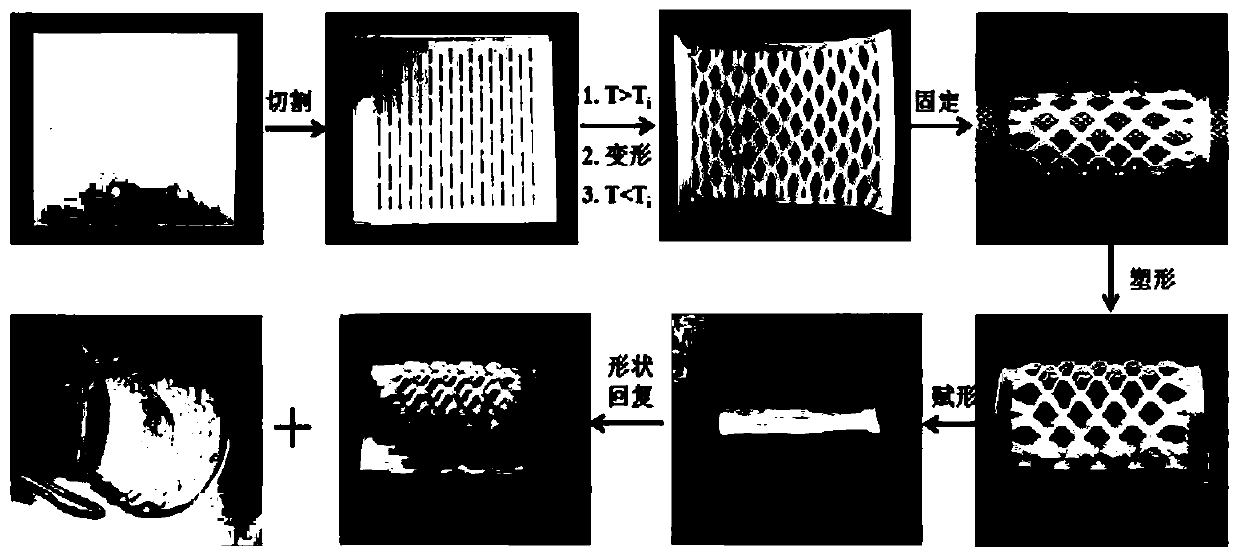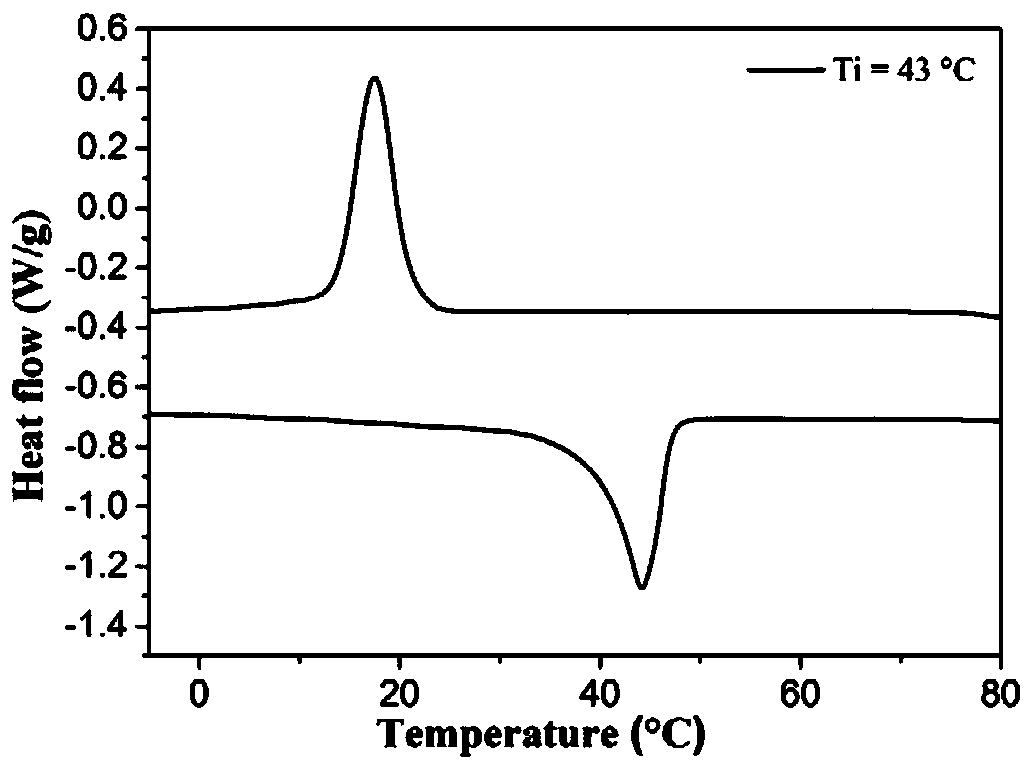4D deformed reticulated hollowed degradable vascular stent with concave-convex structures on inner and outer surfaces, preparation method and application method thereof
A technology with concave-convex structure and inner and outer surfaces, which is applied in the field of intelligent shape memory polymer materials and biomedical devices, can solve the problems of complex equipment, waste of materials, and complicated processes, so as to improve adherence, reduce thrombus formation, and enhance compatibility sexual effect
- Summary
- Abstract
- Description
- Claims
- Application Information
AI Technical Summary
Problems solved by technology
Method used
Image
Examples
Embodiment 1
[0041] The present invention provides a method for preparing and using a 4D deformed mesh hollow degradable vascular stent with concave-convex structures on both inner and outer surfaces, comprising the following steps:
[0042] Step 1: Synthesizing the material of the degradable vascular stent, which is a thermosetting polymer containing dynamic covalent bonds or a thermoplastic polymer or thermosetting polymer containing further cross-linkable functional groups. This step belongs to the prior art and will not be repeated here.
[0043] Step 2: Laser cut the raw material film prepared in Step 1 into a paper-cut pattern with the desired structure.
[0044] Step 3: Heat the material with the cutting pattern in step 2 above the transition temperature, stretch the material, and after stretching to a certain strain, keep the external force, and reduce the temperature of the material below the transition temperature, and the inner and outer surfaces can be obtained in one step. Re...
Embodiment 2
[0049] Weigh 6 g of polycaprolactone diol (molecular weight 2000) and 1.26 g of hexamethylene isocyanate trimer (PHDI) and dissolve them in 20 ml of dichloromethane, add two drops of dibutyltin dilaurate, mix well, Pour it into a polytetrafluoroethylene mold, volatilize the solvent at 25 °C for 24 h, then heat it to 50 °C for vacuum drying, and continue to cure for 12 h. After the reaction, the polymer sheet with a thickness of 0.5 mm was demoulded. The shape memory transition temperature of the obtained polymer sheet is around 43 °C, as figure 2 As shown; the material contains a large number of ester bonds, at different temperatures, transesterification dynamic bonds (transesterification reaction mechanism such as image 3 shown) the time to complete the exchange is as Figure 4 As shown, in this embodiment, the molding temperature is selected as 140°C, and the molding time is 50 min.
[0050] The technical process of preparing the mesh hollow vascular stent with the polym...
Embodiment 3
[0053] Weigh 3 g polycaprolactone (molecular weight 1500), 1.2 g 1,4-butanediol, 10 g anhydrous N,N-dimethylformamide, two drops of dibutyltin dilaurate (DBTDL) and 5.2 g Isophorone diisocyanate was added to a dry three-necked flask. Under nitrogen protection, stir and react at 90°C for 4 h, after the reaction time ends, the temperature in the flask is cooled to 50°C, then add 1.65 g of acrylate-2-hydroxyethyl ester, and heat up to 80°C to continue the reaction for 4 h. After the reaction was completed, it was lowered to room temperature, 0.015g of photoinitiator UV184 was added, it was poured into a polytetrafluoroethylene mold, dried at 80°C for 2 h, then placed in a vacuum oven, and dried in vacuum at 80°C for 2 h. After cooling down to room temperature, the film was demolded to obtain a thermoplastic polycaprolactone-based shape-memory polyurethane sheet containing photocurable double bonds. The shape memory transition temperature (melting point) of the obtained polymer ...
PUM
| Property | Measurement | Unit |
|---|---|---|
| transition temperature | aaaaa | aaaaa |
| melting point | aaaaa | aaaaa |
| glass transition temperature | aaaaa | aaaaa |
Abstract
Description
Claims
Application Information
 Login to View More
Login to View More - R&D
- Intellectual Property
- Life Sciences
- Materials
- Tech Scout
- Unparalleled Data Quality
- Higher Quality Content
- 60% Fewer Hallucinations
Browse by: Latest US Patents, China's latest patents, Technical Efficacy Thesaurus, Application Domain, Technology Topic, Popular Technical Reports.
© 2025 PatSnap. All rights reserved.Legal|Privacy policy|Modern Slavery Act Transparency Statement|Sitemap|About US| Contact US: help@patsnap.com



